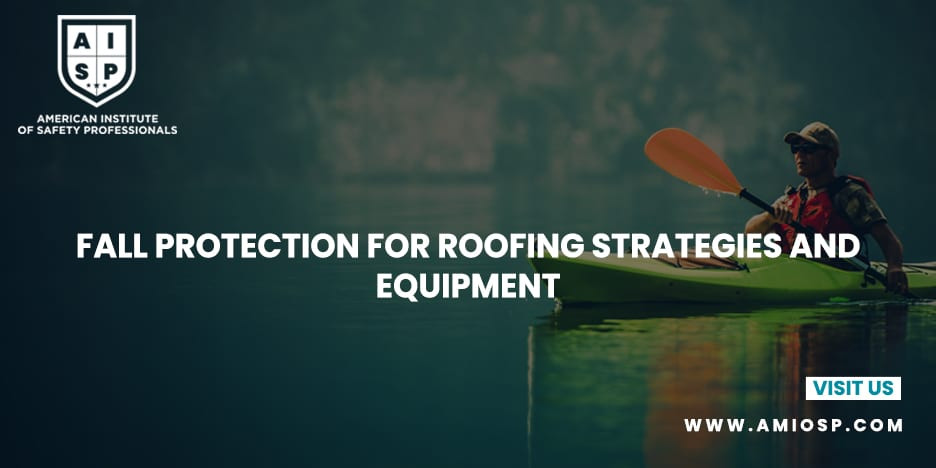Introduction
Roofing work is an essential part of construction and
maintenance projects. However, it also comes with significant risks,
particularly when it comes to falls. According to the Occupational Safety and
Health Administration (OSHA), falls from heights are one of the leading causes
of fatalities and injuries in the construction industry. To ensure the safety
of workers and comply with regulations, it is crucial to implement effective
fall protection strategies and use appropriate equipment. In this blog post, we
will discuss various strategies and equipment options for fall protection in
roofing.
Understanding
the Risks
Before diving into fall protection strategies, it is
important to understand the risks associated with roofing work. Workers can be
exposed to hazards such as unprotected edges, skylights, roof openings, and
fragile roofs. Additionally, factors like adverse weather conditions, slippery
surfaces, and uneven terrain further increase the risk of falls. Recognizing
these potential hazards is the first step towards developing an effective fall
protection plan.
Planning
and Training
A comprehensive fall protection plan should be developed
before starting any roofing project. This plan should include procedures for
identifying hazards, selecting appropriate control measures, and providing
training to workers. All individuals involved in the project should receive
training on recognizing fall hazards, properly using fall protection equipment,
and implementing emergency procedures. Regular refresher training sessions
should also be conducted to ensure that everyone is up to date with the latest
safety protocols.
Fall
Arrest Systems
Fall arrest systems are designed to arrest a fall and
minimize the impact on the worker. These systems typically consist of a
full-body harness, a lanyard or lifeline, and an anchor point. When a fall
occurs, the harness distributes the forces across the body, while the lanyard
or lifeline connects the harness to the anchor point, preventing the worker
from hitting the ground. It is crucial to select the appropriate type of fall
arrest system based on the specific roofing conditions and potential fall
distances.
Guardrails
and Safety Nets
Guardrails and safety nets are passive fall protection
systems that can be installed on rooftops to provide collective protection.
Guardrails are physical barriers that prevent workers from accidentally
stepping or falling off the edge of the roof. Safety nets, on the other hand,
are placed below the work area to catch a falling worker. These systems offer
continuous protection and do not require active participation from workers,
making them highly effective in preventing falls.
Personal
Protective Equipment (PPE)
In addition to fall protection systems, workers should
always wear appropriate personal protective equipment (PPE) while working on
rooftops. This includes safety helmets, safety glasses, gloves, and
slip-resistant footwear. Safety helmets protect against head injuries from
falling objects, while safety glasses shield the eyes from debris and foreign
objects. Gloves provide hand protection and improve grip, and slip-resistant
footwear reduces the risk of slips and falls on slippery surfaces.
Inspections
and Maintenance
Regular inspections and maintenance of fall protection
equipment are crucial to ensure their effectiveness. All fall protection
systems, including harnesses, lanyards, guardrails, safety nets, and anchor
points, should be inspected before each use and properly maintained. Any
damaged or worn-out equipment should be replaced immediately. Additionally,
regular inspections of the rooftop should be conducted to identify and address
any potential hazards, such as loose tiles or unstable surfaces.
Conclusion
Fall protection is of utmost importance in roofing work to
safeguard the lives and well-being of workers. By understanding the risks,
planning and training adequately, and utilizing the appropriate fall protection
strategies and equipment, employers can create a safe working environment. It
is essential to comply with OSHA regulations and stay updated with industry
best practices to prevent falls and ensure the success of roofing projects.
Remember, prioritizing safety not only protects workers but also enhances
productivity and reputation in the construction industry.
By implementing effective fall protection measures, we can
make roofing projects safer and reduce the number of accidents and injuries.
Let us prioritize safety and build a culture that values the well-being of
workers above all else.
References:
- Occupational
Safety and Health Administration (OSHA) - www.osha.gov
- Canadian
Centre for Occupational Health and Safety - www.ccohs.ca











0 comments
No Comments